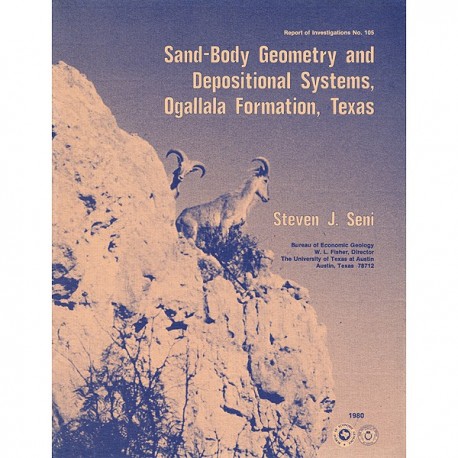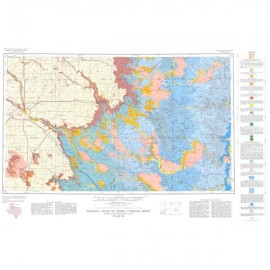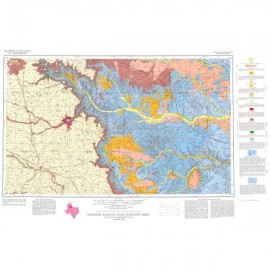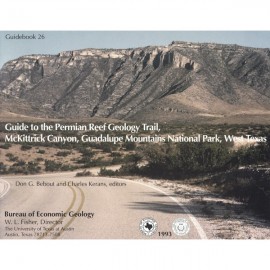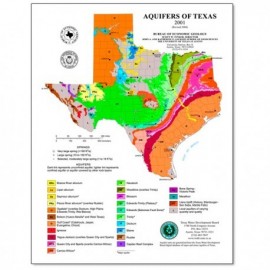Reports of Investigations
-
Books & Reports
- Reports of Investigations
- Guidebooks
- Udden Series
- Geological Circulars
- Down To Earth
- Atlases of Major Oil and Gas Reservoirs
- Texas Memorial Museum Publications
- Environmental Geologic Atlas of the Texas Coastal Zone
- Mineral Resource Circulars
- Other Reports
- Seminars and Workshops
- Handbooks
- Submerged Lands of Texas
- Symposia
- Annual Reports
- Open File Reports
-
Maps & Cross Sections
- Thematic Maps
- Miscellaneous Maps, Charts & Sections
- Geologic Atlas of Texas
- STATEMAP Project Maps
- Geologic Quadrangle Maps
- Cross Sections
- Highway Geology Map
- Energy and Mineral Resource Maps
- Shoreline Change and Other Posters
- Wilcox Group, East Texas, Geological / Hydrological Folios
- Bouguer Gravity Atlas of Texas
- River Basin Regional Studies
- Featured Maps
- Posters
- Teachers & the Public
-
Geological Society Publications
- Gulf Coast Association of Geological Societies
- Alabama Geological Society
- Austin Geological Society
- Corpus Christi Geological Society
- Houston Geological Society
- Lafayette Geological Society
- Mississippi Geological Society
- New Orleans Geological Society
- South Texas Geological Society
- GCS SEPM Publications
- Historic BEG & UT Series
Sand-Body Geometry and Depositional Systems, Ogallala Formation, Texas
RI0105
Sand-Body Geometry and Depositional Systems, Ogallala Formation, Texas, by S. J. Seni. 36 p., 21 figs., 5 tables, 1980. ISSN: 0082335X. Print Version.
A free, digital version of this publication can be found on: Texas ScholarWorks
RI0105. Sand-Body Geometry and Depositional Systems, Ogallala Formation, Texas, by S. J. Seni. 36 p., 21 figs., 5 tables, 1980. ISSN: 0082335X. Print.
To purchase this publication as a downloadable PDF, please order RI0105D.
ABSTRACT
The Neogene Ogallala Formation is an alluvial apron that occurs east of the Rocky Mountains from South Dakota to the Southern High Plains of Texas. The Ogallala was deposited by coalescent, low-gradient, wet alluvial fans that headed in mountains to the west. Geometry and depositional facies of the Ogallala Formation in Texas north of the 33rd parallel have been determined from outcrop studies and drillers' log descriptions. Averaging techniques compensated for the variability of drillers' logs by compressing all the data within a unit area (2.5-minute quadrangle) to a single data point.
Three overlapping fan lobes were constructed from sediment transported east and southeast along pre-Ogallala valley systems that are as deep as 60 m (200 ft). Each lobe displays a general downdip decrease in thickness, net sand and gravel, and percentage sand and gravel.
Only medial-fan and distal-fan facies are present in Texas. Medial-fan facies, in north and northwest Texas, include a thick sand and gravel sheet that is the product of braided-stream processes. To the south and southeast, medial-fan facies grade into distal-fan facies characterized by narrow channel systems that bifurcated downdip. Interchannel areas, composed predominantly of mud and silt, separate distal-fan channel systems. lnterfan areas are broad, low net-sand areas that separate fan
Pre-Ogallala valleys and positive physiographic elements influenced the geometry and distribution of Ogallala depositional systems. Collapse basins, formed by solution of Permian evaporites, are filled with up to 250 m (800 ft) of Ogallala sediment.
Deposition shifted southward after the filling of topographic lows that existed on Permian and Triassic rocks. Sand and gravel trends bifurcate around erosional remnants capped by Cretaceous strata that were buried during the final stage of Ogallala alluviation.
Keywords: sand bodies, depositional systems, Ogallala Formation, Neogene, subsurface geology, Panhandle, Texas
Citation
Seni, S. J., 1980, Sand-Body Geometry and Depositional Systems, Ogallala Formation, Texas: The University of Texas at Austin, Bureau of Economic Geology, Report of Investigations No. 105, 36 p
